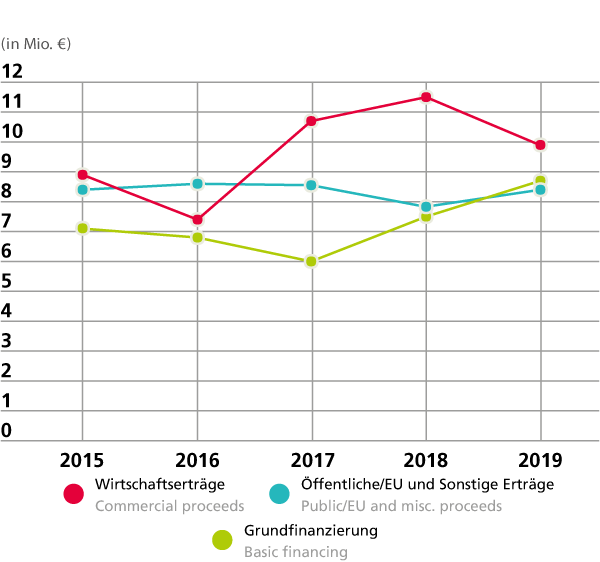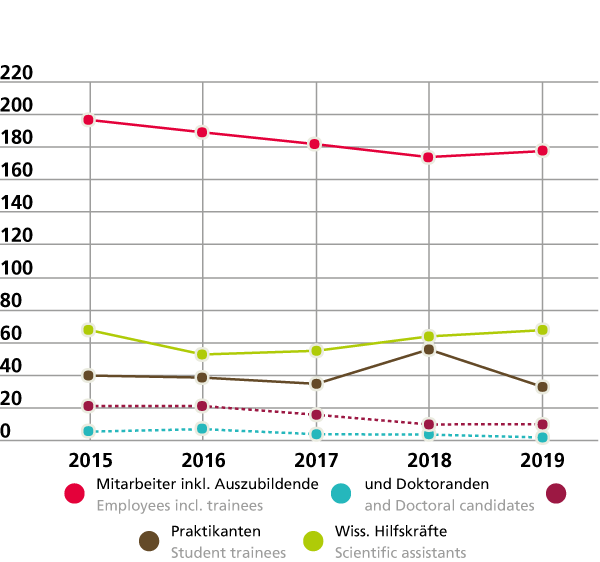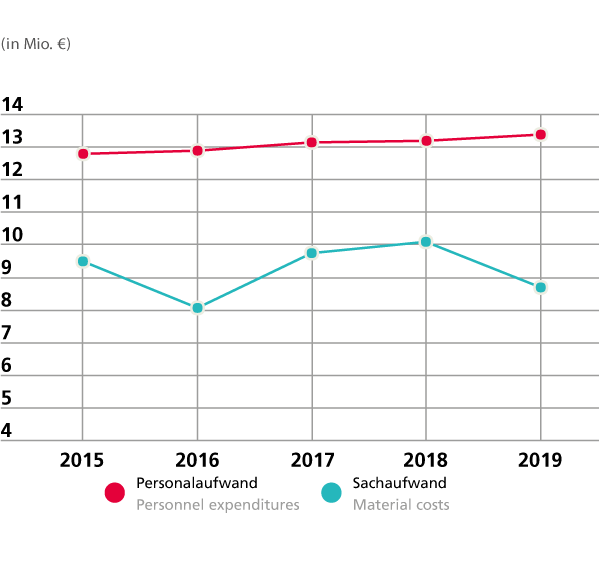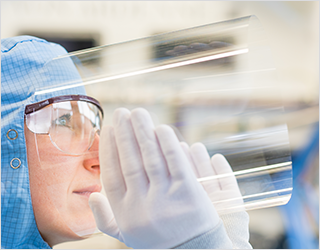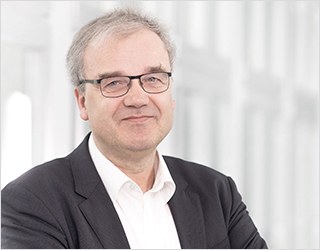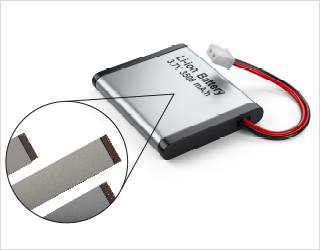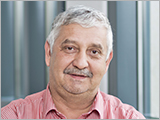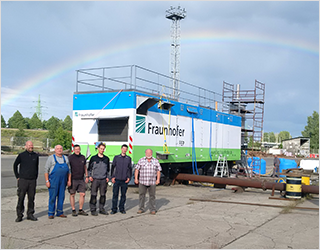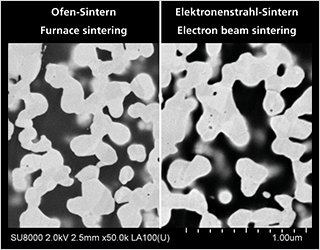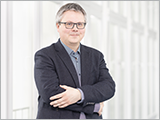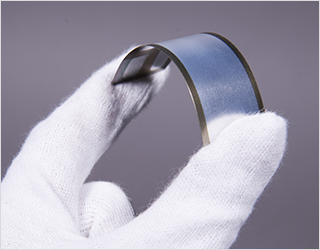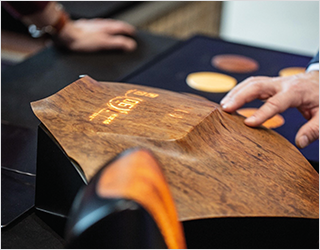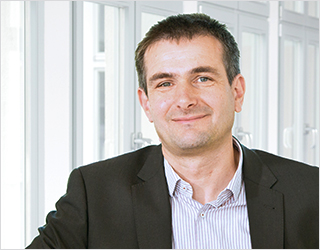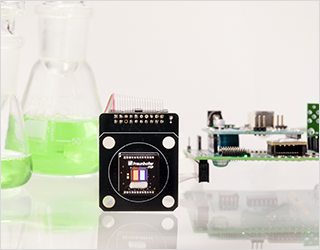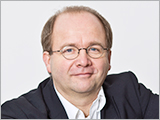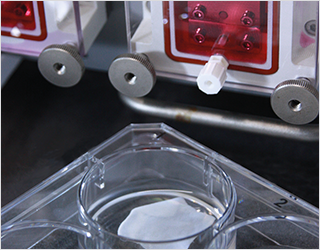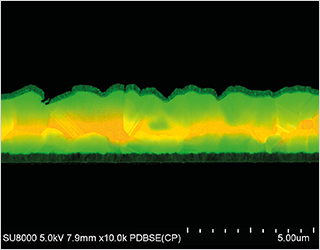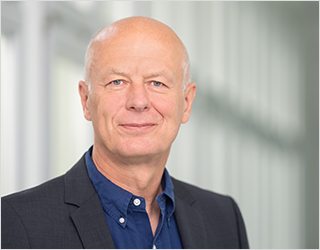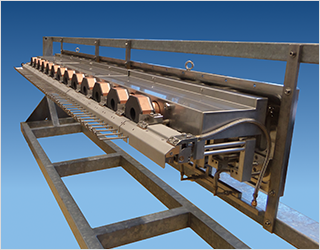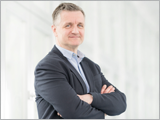M. Fahland, O. Zywitzki, T. Modes, K. Vondkar, T. Werner, C. Ottermann, M. Berendt, G. Pollack
Roll-to-roll sputtering of indium tin oxide layers onto ultrathin flexible glass
Thin Solid Films
Vol. 669, 2019, p. 56 – 59
S. Saager, B. Scheffel, O. Zywitzki, T. Modes, M. Piwko, S. Doerfler, H. Althues, C. Metzner
Porous Silicon Thin Films as Anodes for Lithium Ion Batteries Deposited by Co-Evaporation of Silicon and Zinc
Surface and Coatings Technology
Vol. 358, 2019, p. 586 – 593
M. Top
Roll-to-roll deposition of silicon plasma polymers
Converting Quarterly
Vol. 9, Nr. 1, Quarter 1, 2019, p. 56 – 62
D. Wang, J. Hauptmann, C. May
OLED Manufacturing on Flexible Substrates Towards Roll-to-Roll
MRS Advances
Vol. 4, Issue 24, 2019, p. 1367 – 1375
A. Thabet, R. Schmäschke, J. Fertey, B. Bangoura, J. Schönfelder, M. Lendner, S. Ulbert, A. Daugschies
Eimeria tenella oocysts attenuated by low energy electron irradiation (LEEI) induce protection against challenge infection in chickens
Veterinary parasitology
Vol. 266, 2019, S. 18 – 26
S. Barth, S. Derenko, H. Bartzsch, O. Zywitzki, T. Modes, F. Patrovsky, V. Fiehler, T. Uhlig, P. Frach, L. M. Eng
Influence of Growth Conditions and Film Thickness on the Anodization Behavior of Sputtered Aluminum Films and the Fabrication of Nanorod Arrays thereof
Thin Solid Films
Vol. 676, 2019, p. 1 – 7
S. Barth, H. Bartzsch, J. Hildisch
Piezoelectric and Electrically Insulating Coatings
GIT Laboratory Journal
Vol. 23, 2019, S. 29 – 30
C. May, A. Hausdorf
Full speed ahead for SmartEEs
OPE Journal
Vol. 27, 2019, p. 20
D. Glöß, U. Hartung, A. Drescher, P. Frach, H. Bartzsch
Freeform and Laser Optical Coatings by Inline Magnetron Sputtering
OSA Publishing, OSA Technical Digest
Optical Society of America, 2019, paper WB.2
Y. Li, M. Kovačič, J. Westphalen, S. Oswald, Z. Ma, C. Hänisch, P. Will, L. Jiang, M. Junghähnel, R. Scholz, S. Lenk, S. Reineke
Tailor-made nanostructures bridging chaos and order for highly efficient white organic light-emitting diodes
nature COMMUNICATIONS
Vol. 10, 2019, Artikel 2972
S. Saager, B. Scheffel, O. Zywitzki, T. Modes, M. Piwko, S. Doerfler, H. Althues, C. Metzner
Synthesis of Porous Thin Films as Silicon Anodes for Lithium Ion Batteries
SVC Bulletin
Summer 2019, p. 24 – 36
J. Hesse
OLED Modules for Textile Integration
Photonics Spectra
September 2019, Open Acess Artikel
M. Fahland, S. Garner, G. Pollack
Roll-to-Roll Sputter Deposition of Low Resistance Electrodes on Ultrathin Glass
Proceedings of 62nd SVC Annual Technical Conference 2019
Long Beach, USA, 27. April – 02. Mai 2019, p. 1 – 4
B. Zimmermann, G. Mattausch, C. Metzner
Rate and Composition Control for Plasma-assisted EB-PVD Processes by Optical Emission Spectroscopy
Proceedings of 62nd SVC Annual Technical Conference 2019
Long Beach, USA, 27. April – 02. Mai 2019, p. 1 – 6
S. Saager, B. Scheffel, J.-P. Heinß
High-Rate Deposition of High-Pure Silicon Thin Films for PV-Absorber Layers by Crucible-free Electron Beam Physical Vapor Deposition
Proceedings of 62nd SVC Annual Technical Conference 2019
Long Beach, USA, 27. April – 02. Mai 2019, p. 1 – 10
J.-P. Heinß, F. Fietzke
EMC Shielding on Plastic Components by Electron Beam Evaporation
Proceedings of 62nd SVC Annual Technical Conference 2019
Long Beach, USA, 27. April – 02. Mai 2019, p. 1 – 10
P. Wartenberg, B. Richter, S. Brenner, M. Rolle, G. Bunk, S. Ulbricht, J. Baumgarten, C. Schmidt, M. Schober, U. Vogel
A New 0.64” 720p OLED Microdisplay for Application in Industrial See-Through AR HMD
SID Symposium Digest of Technical Paper
2019, p. 717 – 720
S. Barth, J. Hildisch, H. Bartzsch
Elektrisch isolierende und piezoelektrisch aktive Schichten
GIT Labor Fachzeitschrift
Vol. 7, 2019, S. 40 – 43
S.-C. Hermosa, M. Top, J. Dagar, J. Fahlteich, T. M. Brown
Quantifying Performance of Permeation Barrier-Encapsulation Systems for Flexible and Glass-Based Electronics and their Application to Perovskite Solar Cells
Advanced Electronic Materials
Vol. 5, Nr. 10, 2019, Artikel 1800978
R. Petrich, H. Bartsch, K. Tonisch, K. Jaekel, S. Barth, H. Bartzsch, D. Glöß, A. Delan, S. Krischok, S. Strehle, M. Hoffmann, J. Müller
Investigation of ScAlN for piezoelectric and ferroelectric applications
Onlineproceedings of IEEE
22nd European Microelectronics and Packaging Conference (EMPC) & Exhibition, Pisa, Italy, 16. – 19. September 2019, p. 1 – 5
H. Bartzsch, S. Barth, J. Hildisch, K. Täschner, R. Rückriem, M. Nestler
Sputter deposition of fluorine doped SiO2 films for temperature compensated SAW components
Onlineproceedings of IEEE
IUS Konferenz, Glasgow, Schottland, 06. – 09. Oktober 2019, p. 731 – 734
M. Kraus, Z. Diao, K. Weishaupt, J. P. Spatz, K. Täschner, H. Bartzsch, R. Schmittgens, R. Brunner
Combined ‘moth-eye’ structured and graded index-layer anti-reflecting coating for high index glasses
Optics Express
Vol. 27, Nr. 24/25, p. 34655 – 34664
E. Destouesse, M. Top, J. Lamminaho, H.-G. Rubahn, J. Fahlteich, M. Madsen
Slot-die processing and encapsulation of non-fullerene based ITO-free organic solar cells and modules
Flexible and Printed Electronics
Vol. 4, Nr. 4, 2019, Artikel 045004, 10 pages
R. Petrich, H. Bartsch, K. Tonisch, K. Jaekel, S. Barth, H. Bartzsch, D. Glöß, A. Delan, S. Krischok, S. Strehle, M. Hoffmann, J. Müller
Untersuchung von ScAlN für piezoelektrische und ferroelektrische Anwendungen
Proceedings MikroSystemTechnik Kongress 2019
28. – 30. Oktober Berlin, S. 412 – 416
S. Saager, B. Scheffel, J.-P. Heinß
High-Rate Deposition of High-Pure Silicon Thin Films for PV-Absorber Layers by Crucible-free Electron Beam Physical Vapor Deposition
Surface Coatings & Technology
Vol. 378, 2019, Artikel 125019
K. Fehse, D. Schlebusch, P. Wartenberg, S. Ulbricht, G. Bunk, S. Brenner, M. Schober, C. Schmidt, B. Richter, U. Vogel
OLED/OPD-on-Silicon for Near-to-Eye Microdisplays and Sensing Applications
Proceedings of The International Display Workshops
Vol. 26, 2019, p. 880 – 882
K. Fehse, D. Schlebusch, P. Wartenberg, S. Ulbricht, G. Bunk, S. Brenner, M. Schober, C. Schmidt, B. Richter, U. Vogel, S. Czihal, M. Morjan, M. Lau
Integration organischer Leuchtdioden auf einem Sensorchip zur Messung der Sauerstoffkonzentration in Gasen und Flüssigkeiten
Proceedings 14. Dresdner Sensor-Symposium
02. – 04. Dezember 2019, p. 49 – 51
B. Richter, P. Wartenberg, U. Vogel
Displays von ultra-low-power bis HD: OLED-Mikrodisplays für Augmented und Virtual Reality
elektronik industrie
Vol. 10, 2019, S. 54 – 56
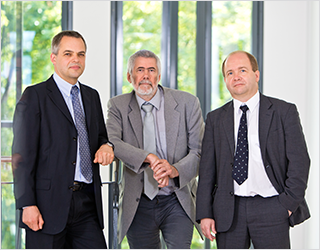
 Fraunhofer Institute for Electron Beam
Fraunhofer Institute for Electron Beam
